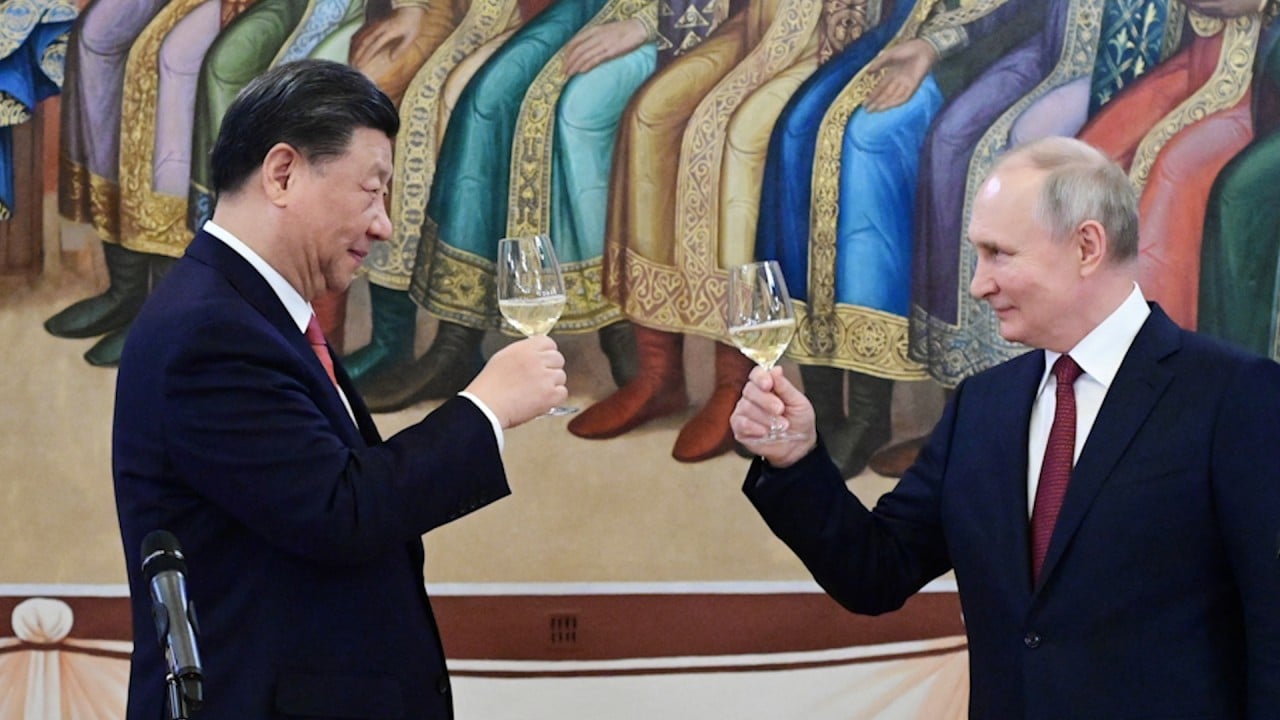
China’s yuan makes Brazilian inroads, as ‘de-dollarisation reflects cracks’ in US currency settlements
- Increase in yuan settlements with largest South American country shows how Beijing is trying to prevent being financially strangled amid US decoupling
- But yuan’s overseas expansion is still curtailed by the fact that it is less convertible than the US dollar or euro, and as Beijing maintains strict capital controls
China is leveraging its trade advantages to promote the use of its currency with major commerce partners, building up the yuan’s strength to challenge the US dollar’s dominance in the international monetary system, as highlighted by recent progress with the largest country in South America.
The push for yuan settlements in trade and investment, rather than US dollars as an intermediary, is one of many ways Beijing has set out to reduce its exposure to dollar assets and prevent China from being financially strangled by Washington.
Brazil has begun to accept trade settlements and investments in yuan, with an agreement reached between central banks in February, and the appointment of a yuan clearing bank and access to the Cross-border Interbank Payment System, the China equivalent to international financial messaging service Swift, last week.
Meanwhile, Brazil’s yuan-denominated foreign-exchange assets reached a new high of 5.37 per cent of the total by the end of 2022, surpassing euro assets to be the second-largest.
It marked a strong increase since the yuan was included in Brazil’s foreign-exchange reserves four years ago, as its US dollar assets fell to 80.24 per cent at the end of 2022 from 89.93 per cent in 2018.
“In the short term, such de-dollarisation reflects cracks in the US dollar-dominated international monetary system amid geopolitics,” said joint research released on Monday by Huang Yadong and Zhang Wenlang with China International Capital Corporation, a leading Chinese investment bank.
“It showed a long-term trend that the international status of the US dollar will be eventually aligned with its economic standing,” the two analysts said.
The yuan now accounts for just 2.19 per cent of global payments, 3.5 per cent of global foreign exchange transactions, 2.69 per cent of reserves held by central banks, and 12.28 per cent of the International Monetary Fund’s special drawing rights currency basket.
Its overseas expansion is curtailed by the fact that it is less convertible than the US dollar or euro, and as China imposes strict capital controls to counter the shock of international financial markets.
Nevertheless, many believed that there will be much room for improvement, given its status as the world’s largest commodities exporter that accounts for around 18 per cent of the global economy.
China reported double-digit growth in yuan-denominated trade settlement and investment in recent years.
Around 7.92 trillion yuan (US$1.15 trillion) worth of commodity trade was settled in yuan last year, an increase of 37.3 per cent from a year earlier, according to the Ministry of Commerce.
Yuan settlements concerning direct investments rose by 16.6 per cent, year on year, to 6.76 trillion yuan in 2022.
Chinese leaders also have been lobbying for the use of the currency in bilateral crude oil trade with Middle Eastern countries.
Beijing is also keen on promoting more local currency trade and financial transactions with members of the Association of Southeast Asian Nations (Asean), which is China’s largest trading partner.
It already clinched local currency settlement deals with some Asean member countries such as Indonesia, Vietnam and Cambodia.
Huang Yiping, a Peking University professor and a former central bank adviser, said that a primary cause of financial crises in emerging markets has been a mismatch in their currencies – they often build up lots of US dollar debt that is covered by assets dominated in their own currencies.
Beijing said it will further internationalise the yuan in an orderly manner, in a keynote report released in October.
The People’s Bank of China has accelerated the establishment of financial infrastructures to facilitate yuan cross-border settlements, transfers and investments.
It has signed bilateral currency-swap deals, a mechanism to provide yuan liquidity overseas, with more than 40 countries or regions, including 350 billion yuan with the European Central Bank. Their combined value was more than 4 trillion yuan by the end of 2021.
China’s central bank has also authorised 31 yuan-clearing banks in 29 countries or regions.


